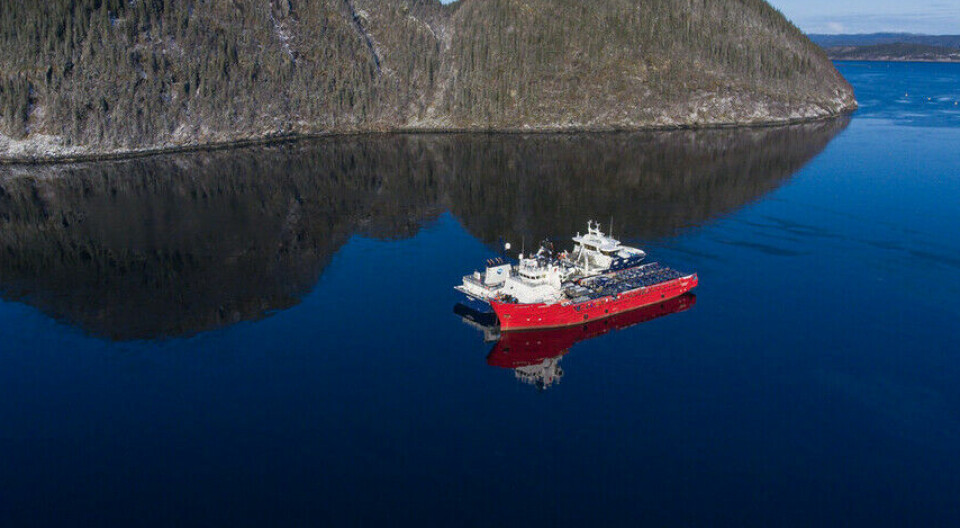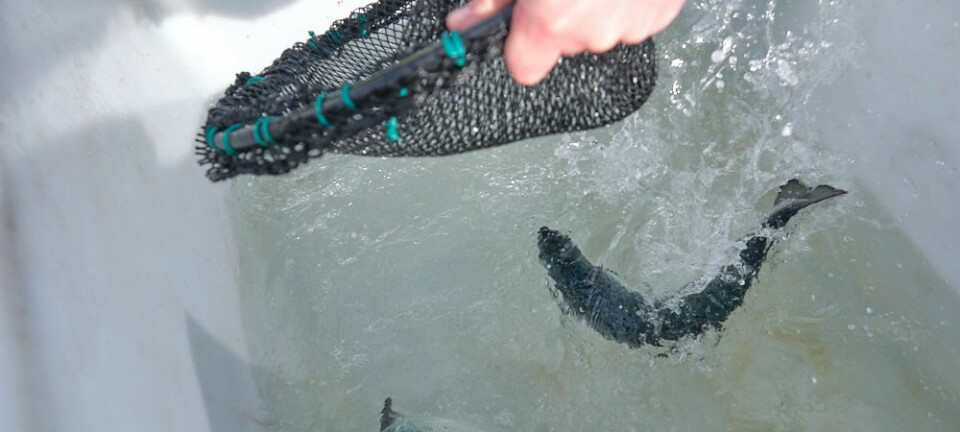
Filtration system may offer huge opportunity for better salmon delousing
Removal of 90% of Salmosan residue could increase number of Scottish fish farms allowed to perform three treatments per day from two to 364
The number of Scottish salmon farms allowed to use one or more treatments of the sea lice medicine Salmosan Vet per day could be massively increased if the treatment water is filtered through aquaculture biotechnology company Benchmark’s CleanTreat system, the company has calculated.
CleanTreat is used in Norway to filter out residues of Benchmark’s imidacloprid-based Ectosan Vet medicine, which is not yet licensed in the UK. But trials with a bespoke CleanTreat system in Scotland have shown that it also consistently removed more than 90% of UK-licensed Salmosan (azamethiphos), potentially opening the door for more efficient and effective delousing.
Salmosan, which is supplied by Benchmark, is currently applied in tarpaulin bath treatments and released into the sea when the tarpaulin that encloses a net pen to create a bath is removed. This limits the amount that can be used – for example, to just one cage every 24 hours - depending on what regulators assess to be a safe limit for each site.
Treating salmon in a wellboat instead of a tarpaulin bath would allow 90% of the medicine to be removed from the treatment water by CleanTreat before the water is discharged. This would enable farmers to treat more pens per day to reduce resettlement of lice on treated fish, while remaining within discharge limits.
No fish used
The CleanTreat/Salmosan trial was a collaboration between Benchmark, the Sustainable Aquaculture Innovation Centre (SAIC), salmon farmer Mowi Scotland, and the University of Stirling, with support from the Scottish Environment Protection Agency (SEPA).
No fish were used in the trial, which involved Salmosan being added to water in a wellboat and then filtered through the bespoke CleanTreat unit installed on a workboat.
Speaking at the recent Sustainable Aquaculture Summit run by SAIC in Glasgow, Benchmark senior process engineer Tony Boyd said that after successfully trialling the system, the company carried out a numeric exercise where it looked at publicly available Scottish Government data on azamethiphos licences throughout Scotland for fish farming.
371 licences
“We found 371 active 24-hour azamethiphos discharge licences and then we wanted to compare a conventional treatment with our model, which is an 1,800m³ wellboat and 90% CleanTreat removal,” said Boyd.

Only two sites in Scotland are currently licensed to do three 4,000m³ tarpaulin treatments per day but if they did the same treatment through a 90%-removal CleanTreat system, 364 could do it.
“Only two sites in Scotland are currently licensed to do three 4,000m³ tarpaulin treatments per day but if they did the same treatment through a 90%-removal CleanTreat system aboard the 1,800m³ wellboat we worked with, that’s 364 of the 371 able to do that treatment.”
A 4,000m³ tarpaulin treatment equates to one 120-metre circumference pen.
“It should be noted that this was just a numeric exercise, and we didn’t assess sites for accessibility of wellboats and workboats, etc, but it seems there is a significant opportunity here.”
A lot of work
Boyd told the sustainability summit that a huge amount of preparatory work was carried out before the trial began.
“We had to develop a lab-scale method to detect azamethiphos down to a low level, and very accurately. After that we completed trials with a small CleanTreat system to prove that we could effectively remove Salmosan Vet.”
Benchmark then cooperated with Mowi to identify a trial site and helped the fish farmer apply to SEPA for a licence variation to allow the trial to take place.
“We began by running clean seawater through the system to make sure it was running correctly,” said Boyd. “We then ran the system through our CleanTreat for as much time as we could get between the wellboat and the workboat (which carried the CleanTreat system). We managed to run for around 63 hours while we were out there.
“We also had a lab set up at the trial site that we would send samples to twice a day.
Nine treatment wells
“During the six days we were there we transferred 8,100m³ of water, equivalent to nine treatment wells of the wellboat that we used. We received that water at about 130m³ an hour.”
The average removal efficiency of each well was always well above 90%, explained the engineer, who said the filtration system offered a massive opportunity for Scottish fish farming in the way it uses Salmosan in the future.
“Where licensing limits the number of cages treated per day, purification of the medicine through CleanTreat to reduce overall discharge could decrease total site treatment time,” he told Fish Farming Expert.
“This trial has highlighted the potential of CleanTreat in enabling the use of efficacious and high welfare medicines, such as Salmosan Vet, in a manner which champions environmental responsibility.
Sustainable solutions
“At Benchmark, we strive to contribute to improving the integrated pest management toolbox, offering sustainable and efficacious solutions that support farmers and their fish. It was exciting to collaborate with SAIC, the University of Stirling and Mowi on this trial to showcase the potential of the CleanTreat system.”
The next steps include liaising with SEPA to understand the requirements to deploy CleanTreat in Scotland, larger scale trials and trials with fish, and continued assessment of the requirements of a commercial scale system.























































